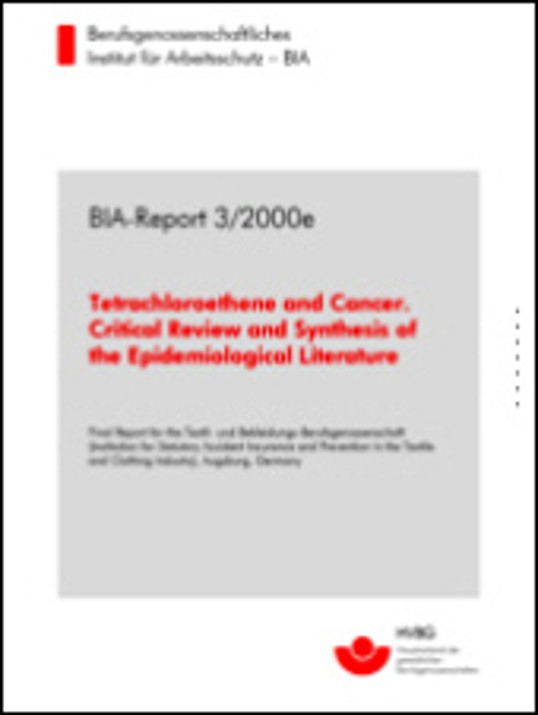Tetrachloroethene and Cancer. Critical Review and Synthesis of the Epidemiological Literature (BIA-Report 3/2000e)

Cover of BIA-Report 3/200e
Source: DGUV
Abstract: Tetrachloroethene (perchloroethylene, PCE) is used for metal cleaning and degreasing, in dry cleanings and as solvent in the chemical industry. In epidemiology studies, which analysed collectives with potential PCE exposure (primarily dry cleaners), increased hazards regarding some specific cancer localisations have been described. However, the findings are not uniform. In the study in hand, the literature on epidemiology regarding cancer research and PCE exposure issues has been extensively consolidated. Each study has been critically reviewed in order to determine the quality of data and methods respectively. Findings of the relevant studies have been summarized individually for specific cancer localisations. The available literature shows strong methodical restrictions (exposition assessment and confounding) and provides heterogeneous results. None of the studies is adequately expressive, and the epidemiologic evidence in its entirety is not suitable to convincingly demonstrate that any connection (whether strong or weak) exists between exposure to PCE and cancer.
Bibliographic data

Dieckmann, W.; Mundt, K.A.; Birk, T.; Burch, M.T.; McDonald, M.; Bigelow, C.:
Tetrachlorethene and Cancer. Critical Review and Synthesis of the Epidemiological Literature (BIA-Report 3/2000e). Hrsg.: Hauptverband der gewerblichen Berufsgenossenschaften, Sankt Augustin 2000. ISBN: 3-88383-653-2
